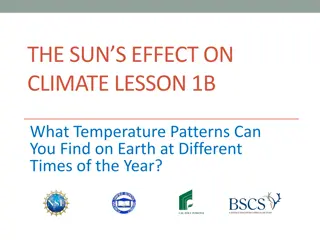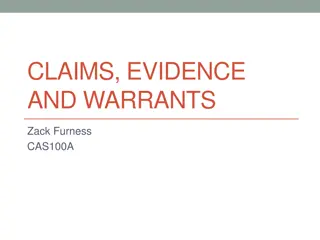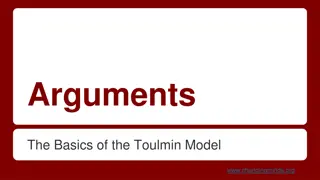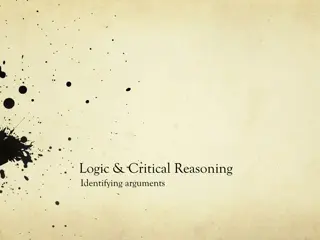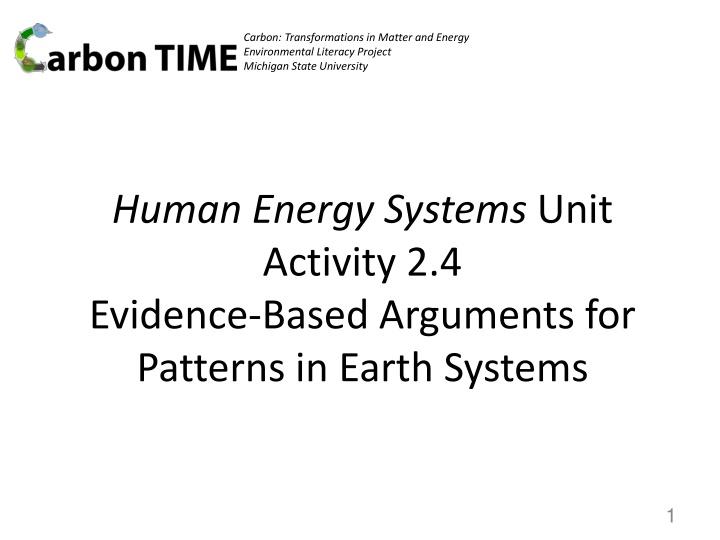
Climate Change Patterns
Explore the data representations of atmospheric CO2 change, global temperature, and Arctic sea ice variability. Assess short-term and long-term trends to predict future patterns. Analyze the generalizability of the data to different regions across the globe.
Uploaded on | 0 Views
Download Presentation

Please find below an Image/Link to download the presentation.
The content on the website is provided AS IS for your information and personal use only. It may not be sold, licensed, or shared on other websites without obtaining consent from the author. If you encounter any issues during the download, it is possible that the publisher has removed the file from their server.
You are allowed to download the files provided on this website for personal or commercial use, subject to the condition that they are used lawfully. All files are the property of their respective owners.
The content on the website is provided AS IS for your information and personal use only. It may not be sold, licensed, or shared on other websites without obtaining consent from the author.
E N D
Presentation Transcript
Carbon: Transformations in Matter and Energy Environmental Literacy Project Michigan State University Human Energy Systems Unit Activity 2.4 Evidence-Based Arguments for Patterns in Earth Systems 1
You are here 2
What data are represented in each phenomenon? For what time period? Atmospheric CO2 Change in Sea Level Height 1.0 Global Temperature (meteorological stations) .8 Temperature Anomaly ( C) .6 .4 .2 0. .2 Annual Mean 5 year Running Mean .4 .6 1880 1900 1920 1940 1960 1980 2000 3
Are these data generalizable to different places around the globe? (e.g., do the data represent the whole earth or just a part of it?) Atmospheric CO2 Change in Sea Level Height 1.0 Global Temperature (meteorological stations) .8 Temperature Anomaly ( C) .6 .4 .2 0. .2 Annual Mean 5 year Running Mean .4 .6 1880 1900 1920 1940 1960 1980 2000 4
Arctic Sea Ice What does this tell us about the short-term variability for Arctic Sea Ice? Can we use this short- term pattern to predict what will happen in one year? How about 20 years? 5
How would you describe the short-term variability for each of these phenomenon? Does the short-term variability help you make a prediction about where the data will be in 1 year from now? What about 20 years from now? Atmospheric CO2 Change in Sea Level Height 1.0 Global Temperature (meteorological stations) .8 Temperature Anomaly ( C) .6 .4 .2 0. .2 Annual Mean 5 year Running Mean .4 .6 1880 1900 1920 1940 1960 1980 2000 6
Arctic Sea Ice Look at the data over all 35 years (the blue line). What does this tell us about the long- term trend for Arctic Sea Ice? Can we use long-term trend to predict what will happen in 1 year? How about 20 years? 7
What is the long-term trend in each phenomenon? Does the long term trend help you make a prediction about where the data will be in 1 year from now? What about 20 years from now? Atmospheric CO2 Change in Sea Level Height 1.0 Global Temperature (meteorological stations) .8 Temperature Anomaly ( C) .6 .4 .2 0. .2 Annual Mean 5 year Running Mean .4 .6 1880 1900 1920 1940 1960 1980 2000 8
How might the long-term trends in these phenomena we have discussed be related to each other? Our questions Our ideas 9
Learning Tracking Tool Record the activity chunk name Patterns in Large Scale Data and their role as Investigator. Discuss what you did during the activity chunk and record your ideas in the column, What Did We Do? Discuss with your classmates what you figured out will help you to answer the unit driving question. Record your ideas in the column What Did We Figure Out? Discuss questions you now have related to the unit driving question and record them in the column What Are We Asking Now?




